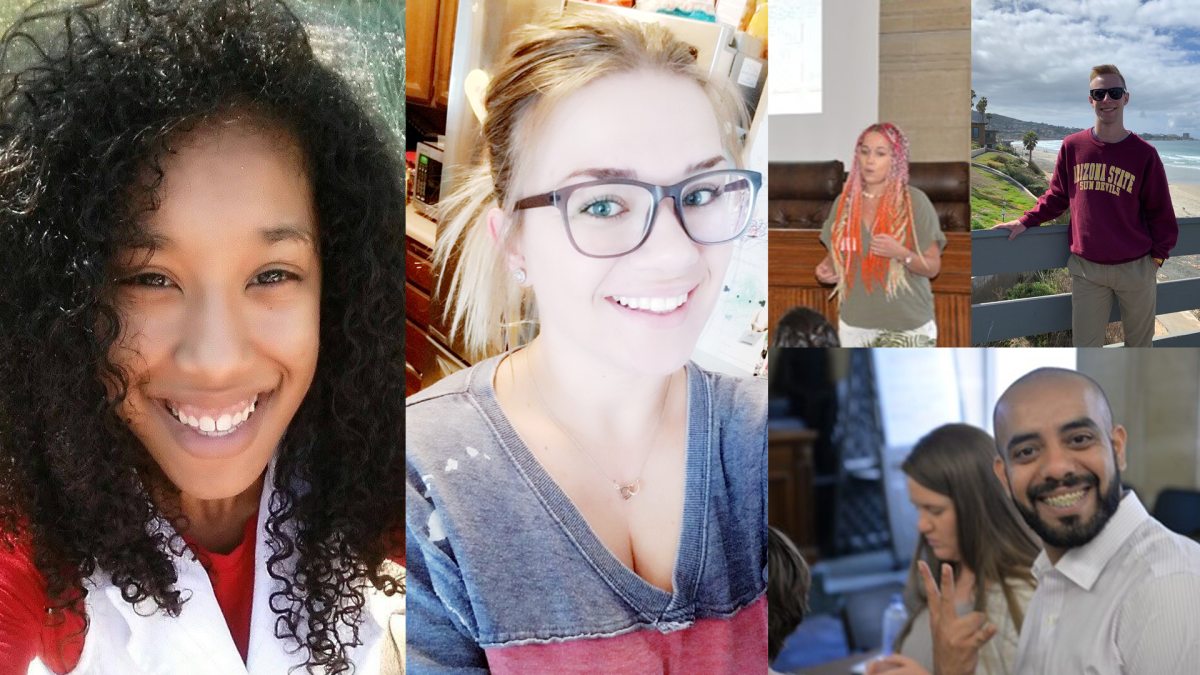New ASU fellowship program addresses urban equity through geographic perspectives

Several students took the opportunity to participate in the inaugural Urban Equity Fellowship Program, including (from left) Syera Torain, Ashia Andrews, Kate Varfalameyeva, Colin Marvin and Abdulrahman Sanad.
Over the summer, Arizona State University's School of Geographical Sciences and Urban Planning invited seven students to participate in the inaugural Urban Equity Initiatives Fellowship Program, where they examined a wide range of issues related to urbanism and inequity.
“A lot of our faculty and students are working on research that creates solutions to inequities,” said Trisalyn Nelson, professor and director of the School of Geographical Sciences and Urban Planning.
“By focusing student internships on equity we are training the next generation of citizens to consider the equity implications of their actions and decisions.”
With guidance from faculty and research centers, such as the Knowledge Exchange for Resilience, students completed research projects and participated in discussion groups to broaden their knowledge about the variety of issues involved in urban equity. One such subject is a popular concern for ASU students like Syera Torian, a graduate student pursuing a Master of Urban and Environmental Planning degree, who tracked bicycle ridership rates on the ASU Tempe campus. She conducted surveys to analyze bicycle and e-scooter data rates on campus, as well as utilized geospatial and statistical tools, like ArcGIS, R-studio and SPSS Statistics to create a map displaying the current trends.
Other projects focused on understanding citywide or regional issues. Ashia Andrews, an undergraduate studying geography, evaluated how wealth and inequality influence the placement of green space in urban developments by analyzing vegetation and land cover data for the city of Price, Utah. Her maps revealed a correlation between the presence of roads, especially highways, and the lack of dense and healthy vegetation, which could be considered environmental markers for inequity.
Colin Marvin, an undergraduate student studying geography, took a global approach and compared the movement of dunes at two sites: Grand Falls in the Navajo Nation, located in Northern Arizona and Praia dos Ingleses in Brazil. To complete this analysis, he used remotely sensed imagery data from Planet and Google Earth Pro and measured the rate of movement through time. Both of these active dunefields are encroaching on urban developments, which poses a risk to the people who live in their path.
Four students from the Knowledge Exchange for Resilience were also selected for the fellowship and they worked together to complete projects of significant value to Arizona communities. Their projects ranged from analyzing toddler drownings by identifying hotspots of water-related fatalities in the Phoenix metropolitan area to collecting data to support the Homeless Management Information System in Maricopa County to assess the economic resilience of the elderly population to creating a database to map the trends in heat vulnerability in Mesa. All of their projects required intense collaboration and management of multiple stakeholders, for which they created various deliverables in the form of maps and databases.
“This program helped me understand equity issues in the community and to look at the problem from different views to find an optimal solution,” said Abdulrahman Sanad, a senior studying geographic information science.
The Urban Equity Initiatives Fellowship Program is an expansion of the Urban Equitable Futures Initiative, which was launched by the School of Geographical Sciences and Urban Planning in April of this year.
More Environment and sustainability

How can cities go green to beat the heat?
As people across the United States turn up their air conditioners to combat rising summer temperatures, researchers are…

ASU sustainability students tackle hotel food waste
Graduating seniors from the School of Sustainability, a unit of the College of Global Futures at Arizona State University,…

Engineering low-carbon building materials
Cement is the strong and versatile binder that holds together sand and aggregates in concrete used to erect the sturdy structures…